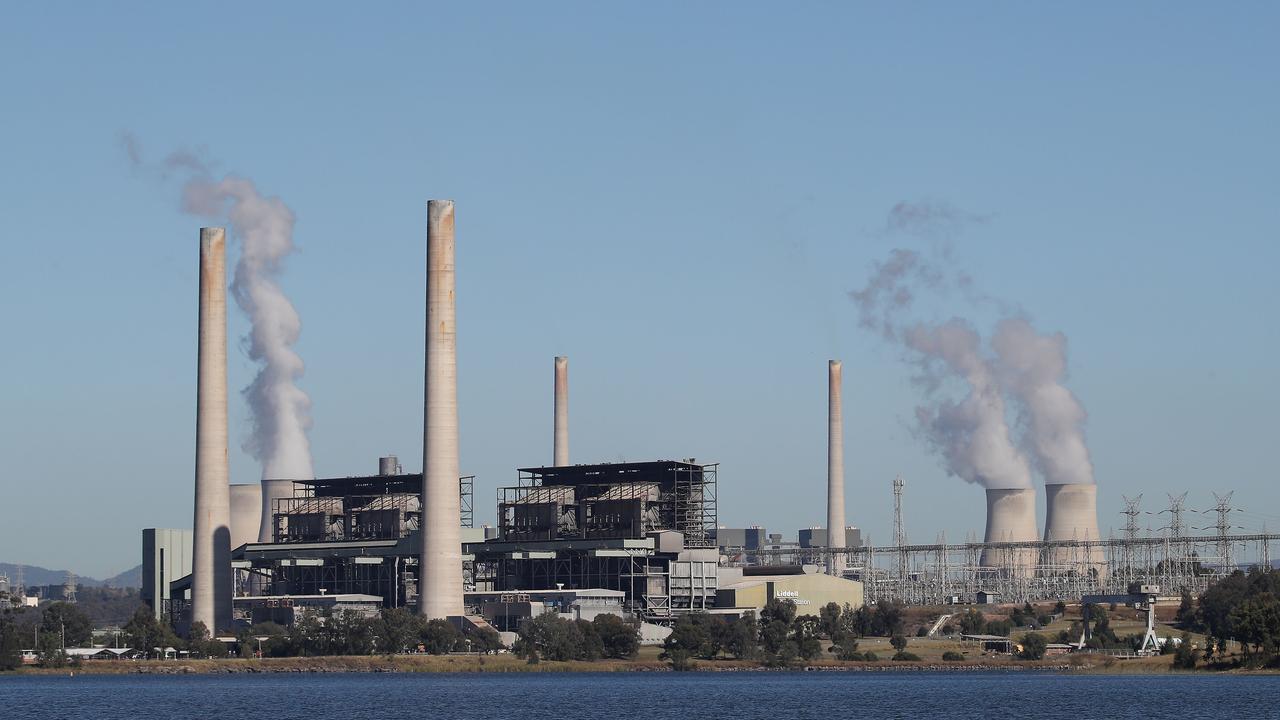Coal generators closing without a back-up plan


Winter will be a testing time. The planned Kurri Kurri gas-peaking plant won’t be operational. Its timeline has blown out a year to December 2024. There has been no explanation from Snowy Hydro or the NSW government for this failure. NSW Energy Minister Matt Kean, who oversees the closure of coal-fired power stations, has resorted to ordering the stockpiling of coal, hoping to avoid blackouts. The shambles over Liddell’s closure does not augur well for the future. Will the lights stay on after Eraring closes in August 2025? It’s an issue previously raised by the Australian Energy Market Operator.
The government-funded gas peaking plant at Kurri Kurri was meant to coincide with Liddell’s closure. The application from Snowy Hydro was approved by the NSW government in December 2021. In the lead-up to the federal election last year Labor overturned its opposition to the plant, recasting it as a hydrogen plant to mollify critics. It committed to operating it on 30 per cent hydrogen “in the first instance”, upgrading to “100 per cent green hydrogen as soon as possible” and by the end of the decade. A promise of $700m was made to convert the plant to hydrogen.
Federal Energy Minister Chris Bowen remains confident about the conversion, despite expert advice to the contrary. Even before the federal election it was known that the specifications for the gas plant’s infrastructure meant it could not store hydrogen-blended fuel. As late as August last year Bowen declared “the budget and the timeframes committed to in opposition would be met”.
Last November, Snowy Hydro acting chief executive Roger Whitby told Senate estimates: “I don’t believe there is any plant in the country, or indeed even in the world, that is currently operating on hydrogen, at least commercially operating on hydrogen.” This suggests that Labor didn’t carry out due diligence on the approvals, costs and practicality of its pre-election hydrogen promises.
Before Christmas, the NSW government signed off on the linked gas/storage Kurri Kurri pipeline with pages of conditions attached. It has taken nine months to get approval for a pipeline designated as critical state significant infrastructure. How much longer will it take for construction to start? It says something about priorities to learn that AGL already has awarded a contract for Liddell’s demolition.
This ongoing confusion about the future of the gas plant was raised at Senate estimates in November. Snowy Hydro executives advised that Kurri Kurri “will start up with gas with the slight delay indicated” (due to weather), that “the storage pipeline is only capable of holding natural gas” and even with increased capital expenditure it is “highly unlikely that it will be the ultimate arrangement for storing hydrogen”.
Despite this, the government has asked Snowy Hydro to prepare an “investment case” ahead of the next budget, by which time Liddell will have closed.
There’s no excuse for planning failures when authorities are advised at least three years in advance about closures. These are domestic issues, nothing to do with the invasion of Ukraine.
Eraring, the largest coal-fired power station, is next on the list – scheduled to close in less than three years. It provides about 25 per cent of NSW’s generating capacity. Together these closures account for 4560MW being withdrawn from the electricity market. The situation is made worse with critical projects such as Snowy 2.0 and the HumeLink over budget and seriously delayed. One of the tunnel-boring machines at Snowy is stuck near the entrance to the 27km of tunnels between two dams. At this rate, Snowy 2.0 may not be operational this decade.
All these planning failures put the spotlight on the Hunter and future risks to energy supplies. With Kurri Kurri delayed, the Waratah Super Battery, promised to be operating before Eraring closes, will act primarily as a transmission shock absorber, with a storage capacity of two hours. Relying on intermittent renewables and battery storage won’t cut the mustard for local industry, which requires the certainty of dispatchable baseload power 24/7. Labor’s political bipartisanship on energy policies explains why Kean has not been held to account.
Regions such as the Hunter have underpinned NSW’s economic development with assured and affordable energy supplies. These planning failures compound broken promises on cuts to power bills and a jobs bonanza that can’t be delivered. The addition of a costly carbon price under a turbocharged safeguard mechanism will lead to job losses among local “carbon workers”. Where are their safeguards and employment alternatives as part of the “just transition”? When will we hear NSW Labor’s plans to address these issues? Virtue signalling has been far removed from the experiences of many people. It’s never too late to learn.
Jennie George is a former president of the ACTU and Labor member for the NSW seat of Throsby (2001-10).







The recent shelving of a liquefied natural gas import terminal at Newcastle heightens concerns about possible energy shortages developing in NSW. It’s not just gas supplies at risk. When Liddell Power Station in the Hunter closes on April 28, NSW will lose about 10 per cent of its electricity supply. The announcement was made years ago but the lack of orderly planning is now telling, with serious consequences.